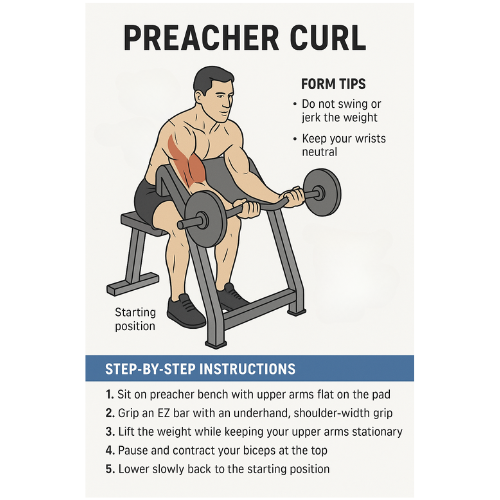
Preacher Curl
Setup
Sit on a preacher bench with your chest against the pad and feet flat on the floor. Place the backs of your upper arms flat on the preacher pad.
Grip the Bar
Hold an EZ bar (or dumbbells) with an underhand grip, palms facing up, hands shoulder-width apart.
Lift the Weight
Curl the weight upward in a controlled motion, exhaling as you lift. Keep your elbows and upper arms fixed on the pad—only your forearms move.
Squeeze at the Top
Pause and contract your biceps at the top of the movement for 1–2 seconds.
Lower Slowly
Inhale as you lower the weight back to the starting position in a slow and controlled manner.
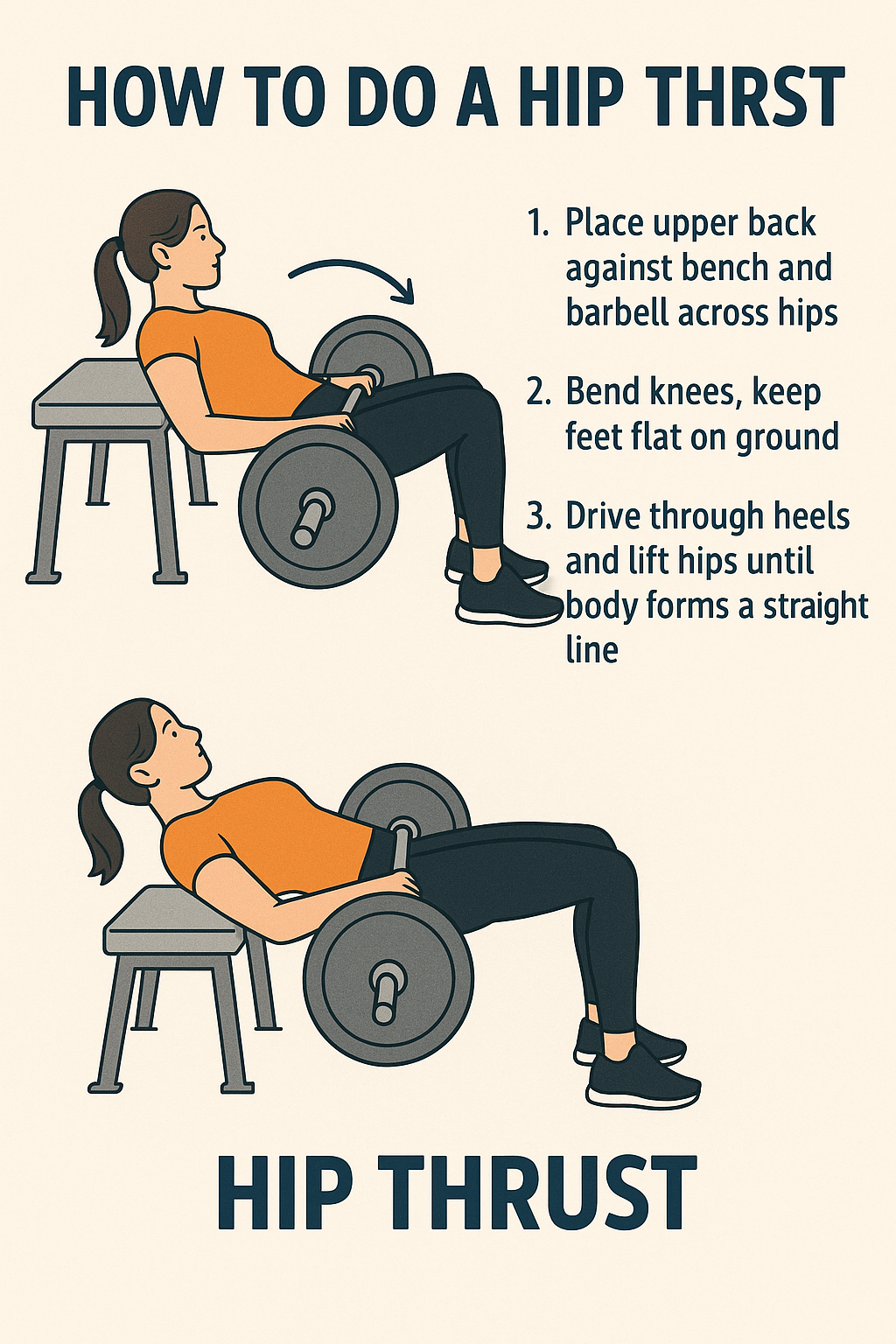
Hip Thrust
The hip thrust exercise offers a wide range of benefits, making it one of the most effective movements for developing strength and stability in the lower body. It primarily targets the glutes, activating them more effectively than many other exercises like squats or lunges. Strong glutes not only improve posture but also play a crucial role in protecting the lower back, hips, and knees from injury. This exercise also enhances athletic performance by building explosive power that translates into faster sprinting, higher jumping, and improved agility. Beyond performance, hip thrusts strengthen supporting muscles such as the hamstrings, quads, and hip stabilizers, which further improves balance and reduces the risk of injury. Another advantage is their versatility, as they can be performed with just bodyweight, resistance bands, or a loaded barbell, making them suitable for all fitness levels. Many people also incorporate hip thrusts for their aesthetic benefits, as they are highly effective in shaping and strengthening the glutes for a more toned and balanced physique. Overall, the hip thrust is a powerful exercise for anyone looking to build strength, prevent injuries, and improve both function and appearance.
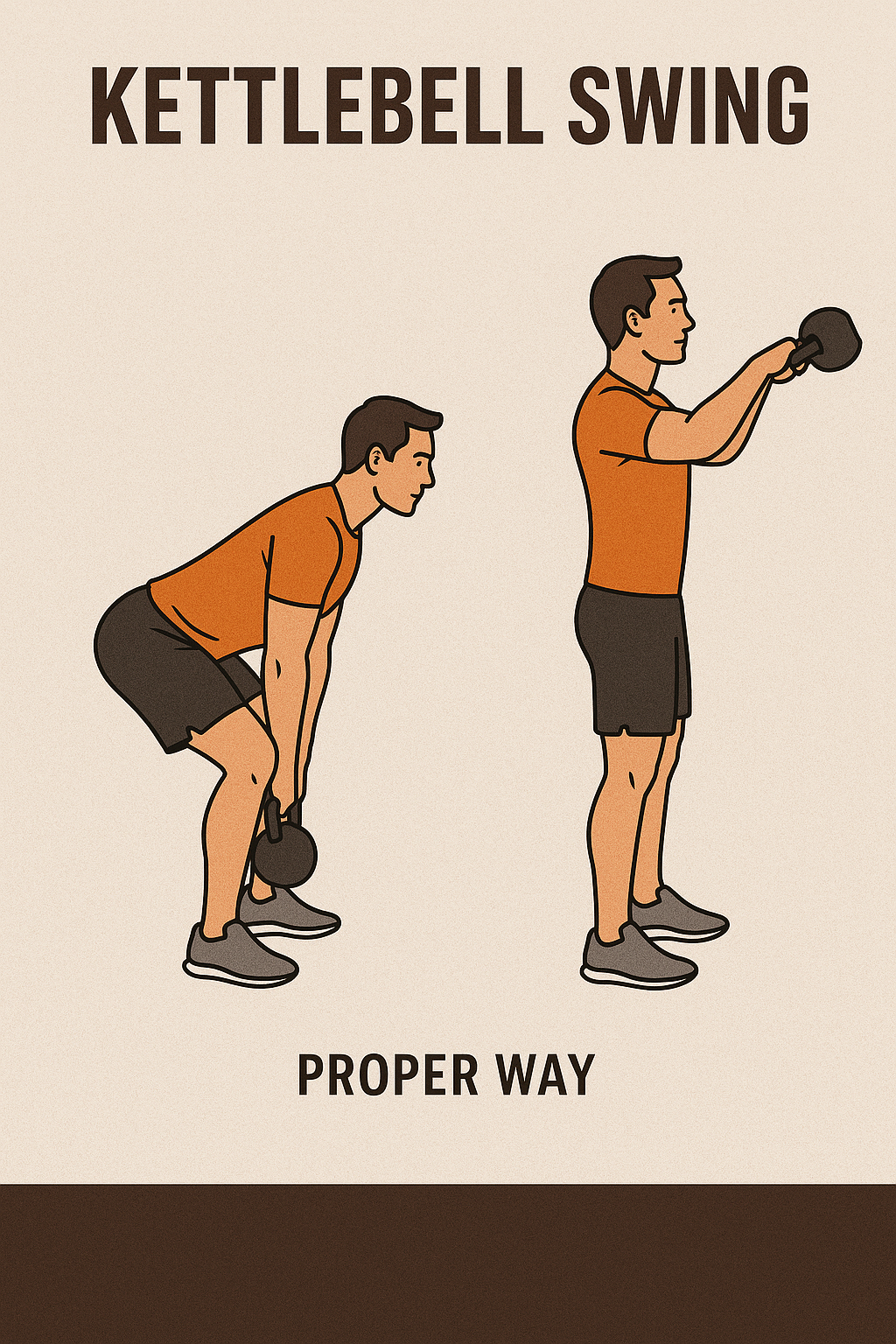
Kettlebell Swing
To perform a proper kettlebell swing, start with your feet shoulder-width apart and the kettlebell on the floor slightly in front of you. Hinge at your hips, keeping your back straight and core engaged, and grip the handle with both hands. Hike the kettlebell back between your legs, then drive through your hips to swing it forward to chest height. Avoid using your arms to lift; the movement should come from explosive hip extension. Let the kettlebell naturally swing back down between your legs and repeat while maintaining control and good posture.
The kettlebell swing is a powerful full-body exercise that primarily targets the posterior chain—hamstrings, glutes, and lower back—while also engaging the core and improving grip strength. It builds explosive power, enhances cardiovascular endurance, and can burn significant calories, making it an excellent choice for both strength and conditioning. Regular practice can improve hip mobility, posture, and athletic performance, while offering a time-efficient workout that blends strength and cardio in one movement.
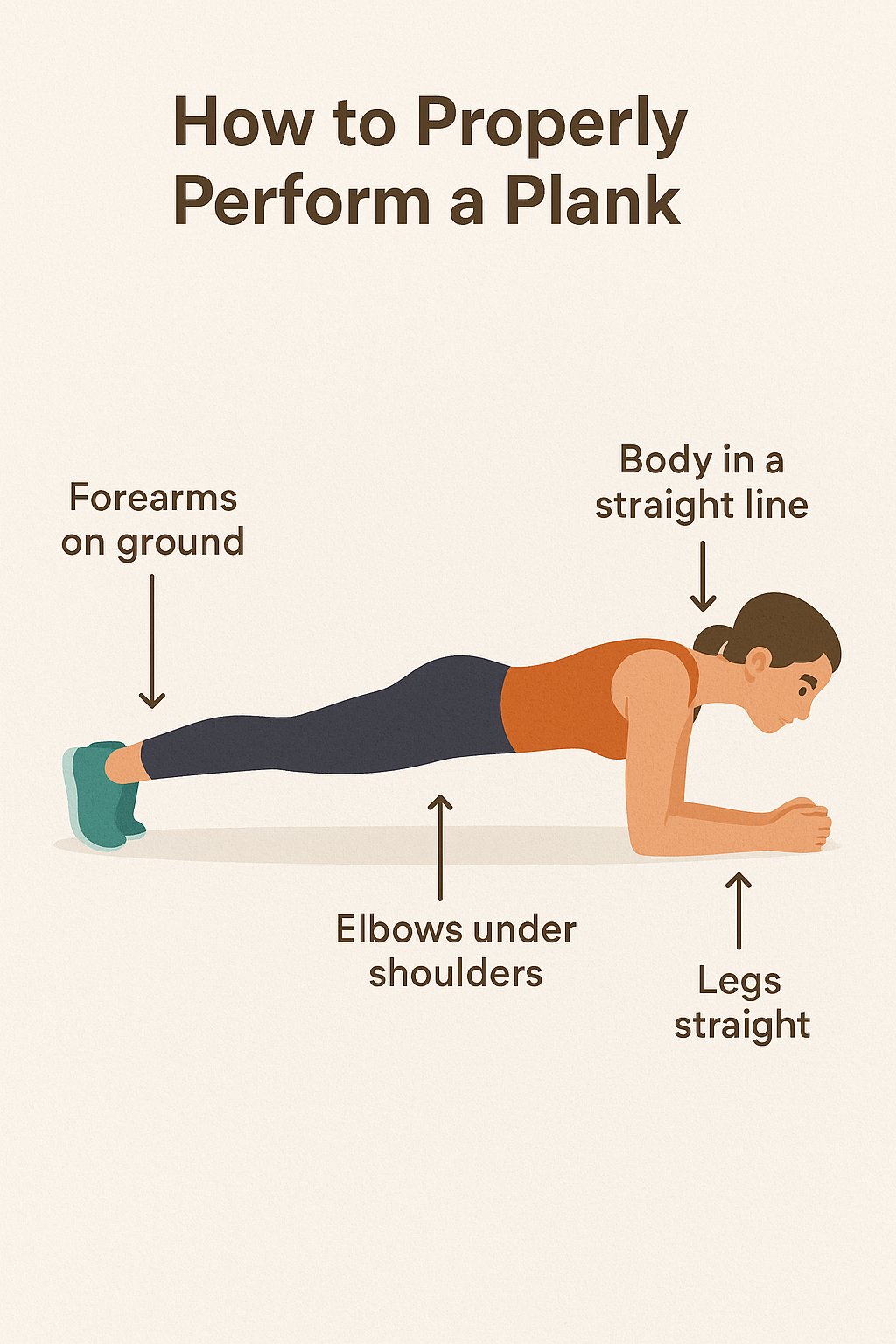
Planks
Planks are a simple but powerful exercise that strengthen much more than your abs. By holding your body in a straight, steady position, planks work your entire core—abs, obliques, and lower back—while also engaging your shoulders, chest, glutes, and legs. This full-body tension builds strength and endurance without any equipment.
Beyond muscle strength, planks improve posture, balance, and stability by training the muscles that support your spine and keep you steady during daily activities. They’re also gentle on the joints, making them a safe option for building a strong foundation that benefits almost every other movement you do.
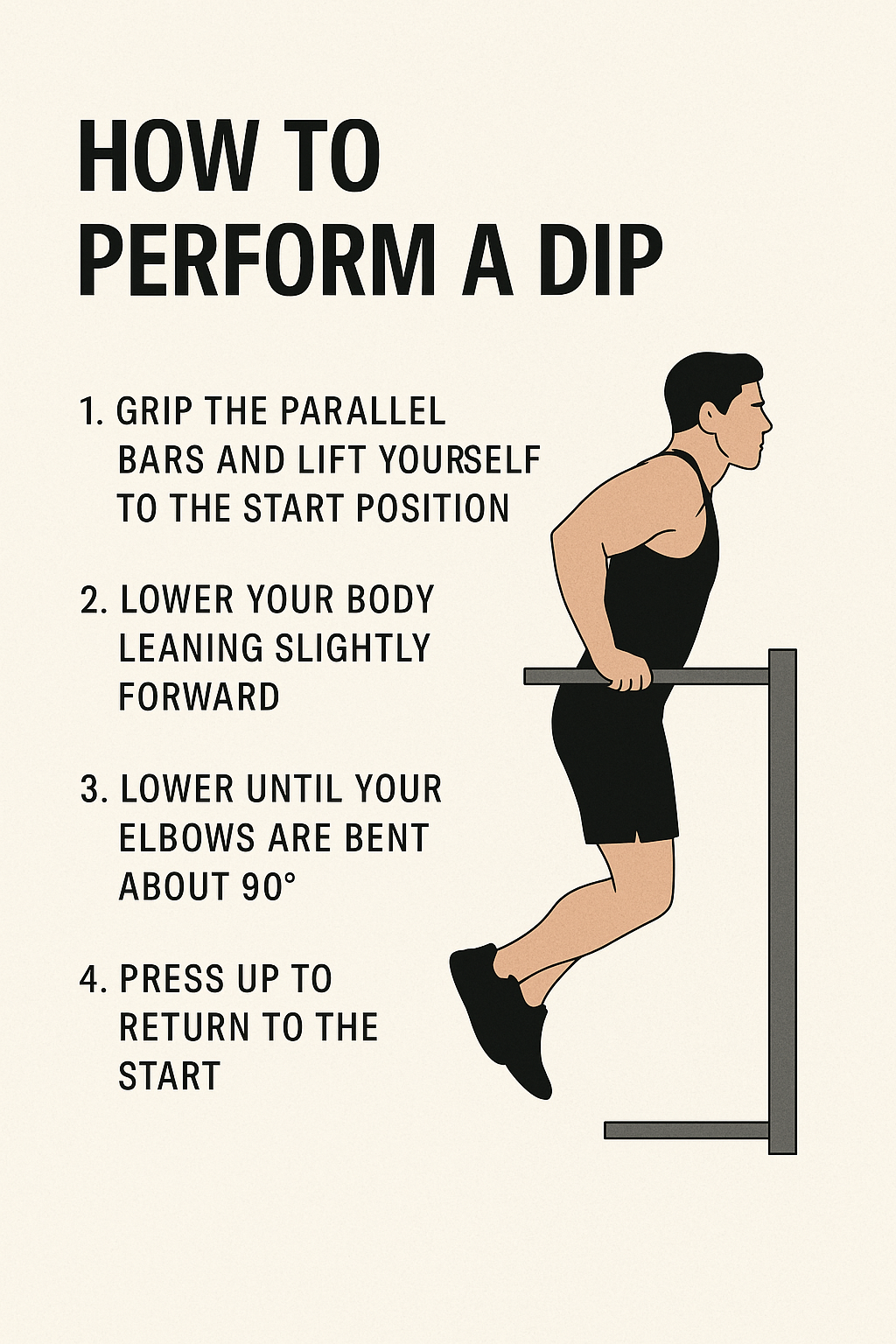
Dips
Dips are a powerful bodyweight exercise that primarily target the triceps, chest, and shoulders, helping to build upper-body strength and muscle definition. They improve pushing strength, enhance shoulder stability, and engage the core for balance. Because dips require minimal equipment, they are a versatile and effective addition to any strength training routine.
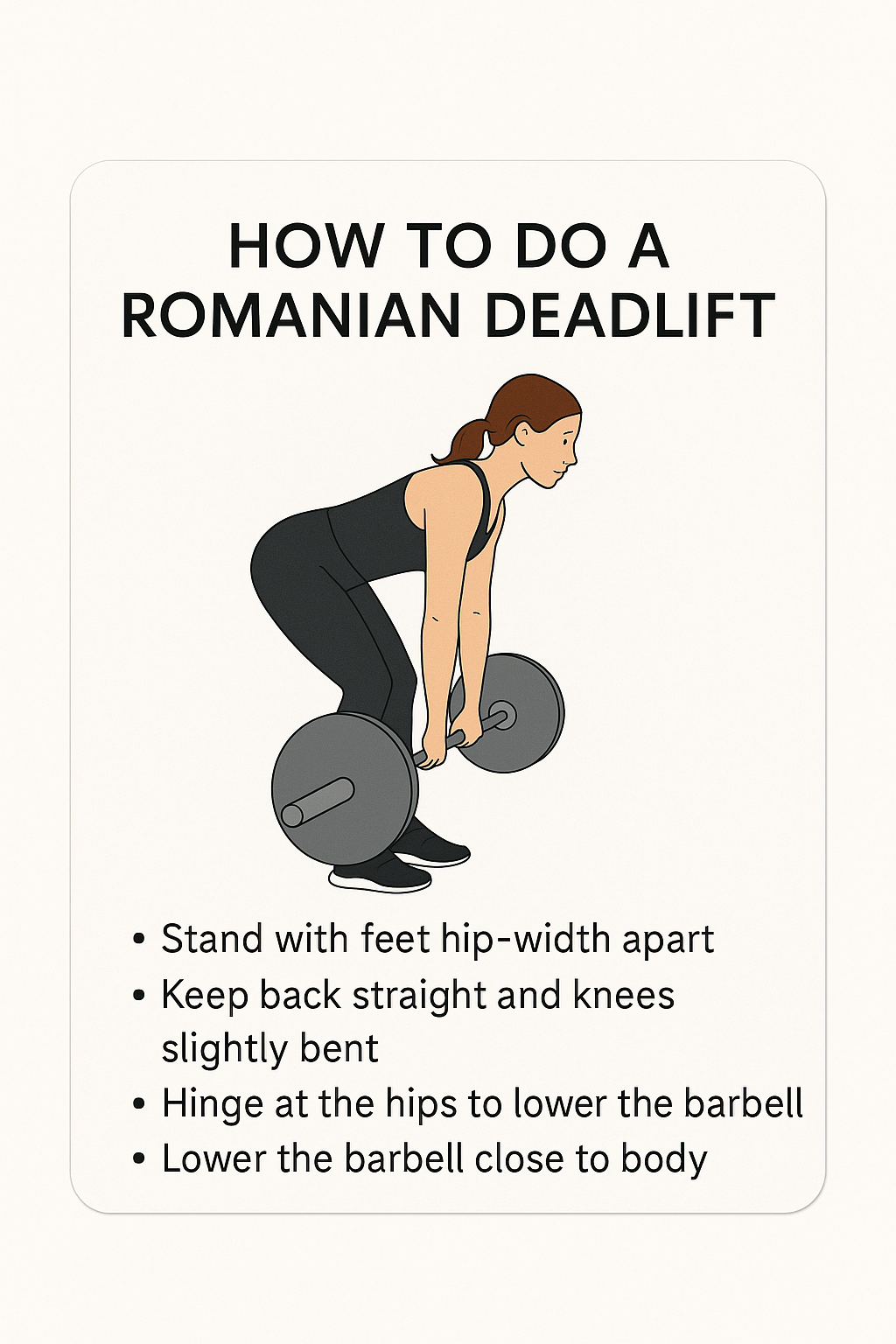
Romanian Deadlift
Romanian deadlifts are excellent for strengthening the hamstrings, glutes, and lower back. They improve posterior chain strength, hip hinge mechanics, balance, and flexibility while reducing the risk of injury. This exercise is particularly effective for building hamstring strength without overloading the lower back.